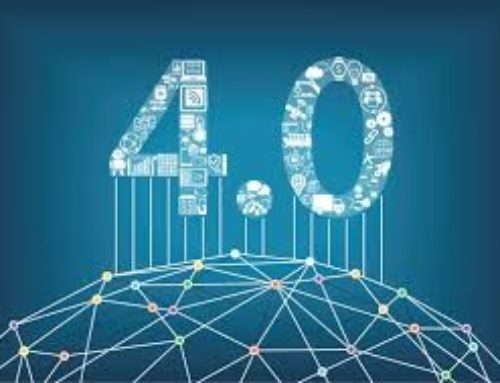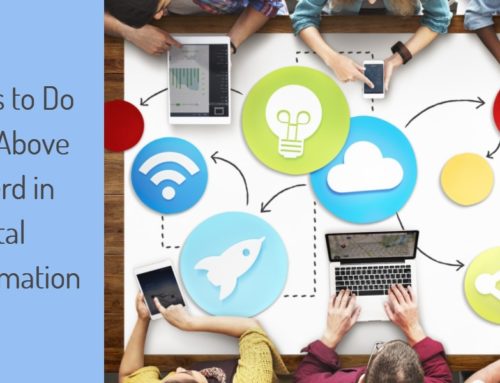All roads and transactions lead to digital. As pundits pontificate about the future for digital marketing, we see trends being compiled across the internet. These predictions focus on consequences external to the company –explosion of data, changes in technology, integrated analytics and new consumer experience. For the executive, this data is somewhat distracting and dated, as every year there will be new digital trends. Looking at these trends is “backwards” to developing a long-term sustainable strategy. So what are the challenging strategic questions that executives need to ask and get answers to sustain their company in the digital age?

Rather than looking externally, senior leadership should shift their focus internally to align their company with the digital future, and continuously refine their digital mindset. Recognition of how digital impacts their company internally is needed to formulate a sustainable response to the ever-changing field. These internal changes act as a necessary byproduct of organizational digital transformation—the inevitable adoption and integration of the digital culture, and the need for a clear understanding of how this culture affects every aspect of the company.
For the courageous executives facing Digital Transformation, here are some of the most important questions they need to ask.
How is your company preparing senior leadership for organization-wide digital integration and transformation?
3.5 million new digital managers will be required in the US and UK by 2018. This data opens up the broader challenge of who is preparing these digital managers of the future globally. With regard to executive digital literacy and Digital IQ, business schools have yet to address this need seriously. In the 2014 PWC Executive Survey “only 20% rated their companies as having ‘excellent’ Digital IQ, while those companies with an excellent Digital IQ were “more than 2x more likely to be top-performers in revenue growth, profitability, and innovation.”
This preparation involves three layers. First, senior management leads the transformation process by integrating digital innovation systematically, in a step-by-step fashion. Second, the training and mentoring of both executives and managers in digital mindset and technological capabilities is focused on contributing to future innovations and integrating marketing strategies. Finally, the training utilizes interactive educational formats to directly engage managers.
Is your Digital Strategy preparing your senior executives to adopt a mindset of the emerging digital culture across generations?
Each generation brings different challenges to the current 4+ generation organization. Executive teams need to understand and evaluate digital technologies, not only as tools in the marketing function but as tactics that will enhance the effectiveness and innovation of the entire organization. Today’s senior leadership are “bridge-builders” between the traditional marketing and sales efforts and the new integrated digital marketing culture which is focused on return on investment. Young account managers are “bridge-builders” traversing generations. Their role is to: understand how to communicate across the different communication channels; translate their inherent digital skill-set into effective corporate marketing strategies; and serve as “reverse mentors” for senior managers. Students, who are your future managers, are challenged to transition from using social strategies in a fun, interactive way to using them strategically and optimizing the results.
The differences of digital skills and fluency between generations should be recognized and addressed for the benefit of all digital efforts. Cross-generational training is required to prepare all personnel to integrate their digital values and mindset into a corporate setting replete with older and more traditionally-trained managers.
How is your company embracing connectedness?
The generation and processing of large amounts of data is transforming the way consumers are connected to the basics of daily life (Internet of Things). This flexibility and level of connectedness has not been translated into the typical corporate environment with the adoption of internal digital communications and enterprise mobility. Companies have been resistant to invest in enterprise social systems that would reduce siloed organizational structures, facilitate collaboration and open up new venues for innovation essential for digital transformation.
How does your company listen and respond to its customers and involve and inspire its employees?
With the growth of digital communications comes the “power to publish and distribute the message globally,” as well as the transparency of the message. These two factors have fundamentally changed the way a company does business. They challenge companies to focus openly on the experience of both their employees and their customers. This results in a major transition in company policy characterized by customer and employee centricity and the expansion of the company’s touch points and interactions. McKinsey’s Banking study demonstrated that customer centricity delivered greater loyalty, higher cross-selling, less attrition and ultimately to higher sales and profits, triggering organizational transformation.
How is your executive team addressing the transition from a profit-centered approach to a triple-bottom line [people, profit, planet] approach affecting all stakeholders?
As the traditional company transitions to digital integration, it adopts the digital culture and expands its core values to include openness, sustainability, and transparency. The incorporation of these values will be an impetus to change the organization’s mode of operations, structure and mission. Separate silos or departments will be transformed into cross-functional groups. This collaborative structure engages and stimulates innovation across departments and facilitates communication up and down the organization. Finally, these changes dramatically impact the board’s direction, key performance indicators [KPIs] and evaluation of the company’s outcomes. The traditional business focuses solely on profit and efficiency while the digitally integrated organization considers a shared value approach considering the needs of all stakeholders. The board needs to slowly transition from profit-centered to triple-bottom line, building on successful projects within the company.
Is your leadership team designing engagement strategies to recruit, develop and retain talented millennials who will foster innovation and generate a competitive edge?
Strategic recruitment of new personnel will, in many cases, be required to support digital transformation. Talent acquisition is critical in maintaining and sustaining these changes long term. Attracting and hiring the right people and retaining them are essential to maintain the company’s competitive position.
As millennials will represent 50% of the workforce in the United States in the next 10 years, they will play an increasingly critical role in the growth and sustainability of the company. Millennials are not just interested in the traditional ways of doing business and high-paying jobs; they are committed to working in companies that respect and engage the consumer, employee and community and involve them in the decision-making processes. They want to help create a learning environment which is innovative, inspiring, and has a sustainable effect on the future.
Conclusion
Digital integration and transformation is a non-linear journey that begins with the inner dimensions of the company and is translated throughout the company’s functional areas. This transformation strategy anticipates the changes, connects the dots from the traditional organization to the digitally integrated organization and generates competitive advantage. Organizations become more collaborative, responding to and fulfilling the needs of their customer base and interacting with the local and global community in more sustainable ways. The company transitions from a focus solely on profits to creating shared value in consideration of the larger context of its local and global responsibilities.
The challenge is yours – transform to survive; innovate to grow!
Click here for a comprehensive roadmap for Digital Marketing and Digital Transformation
View Video- The DIO: Transforming Your Organization




